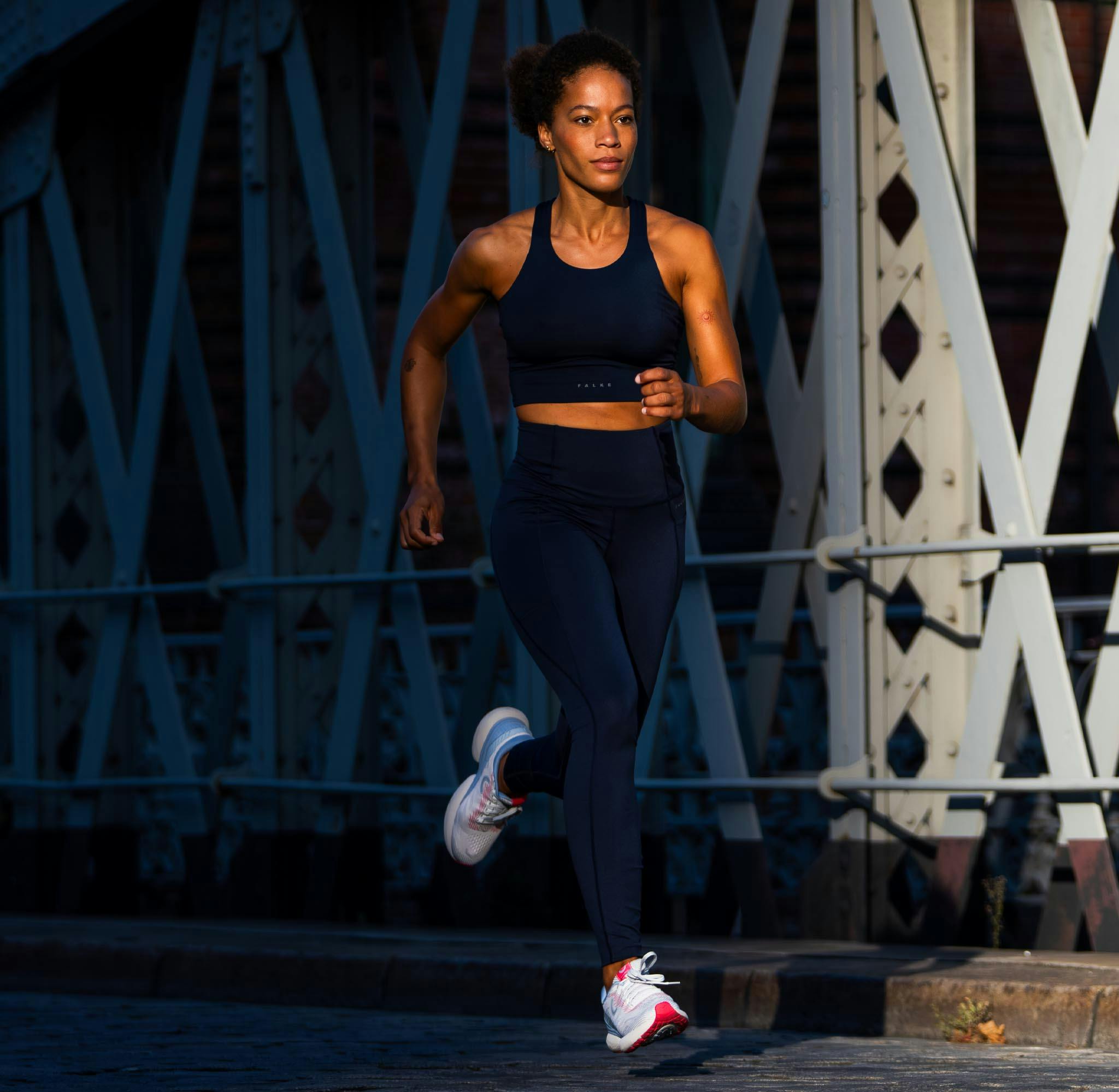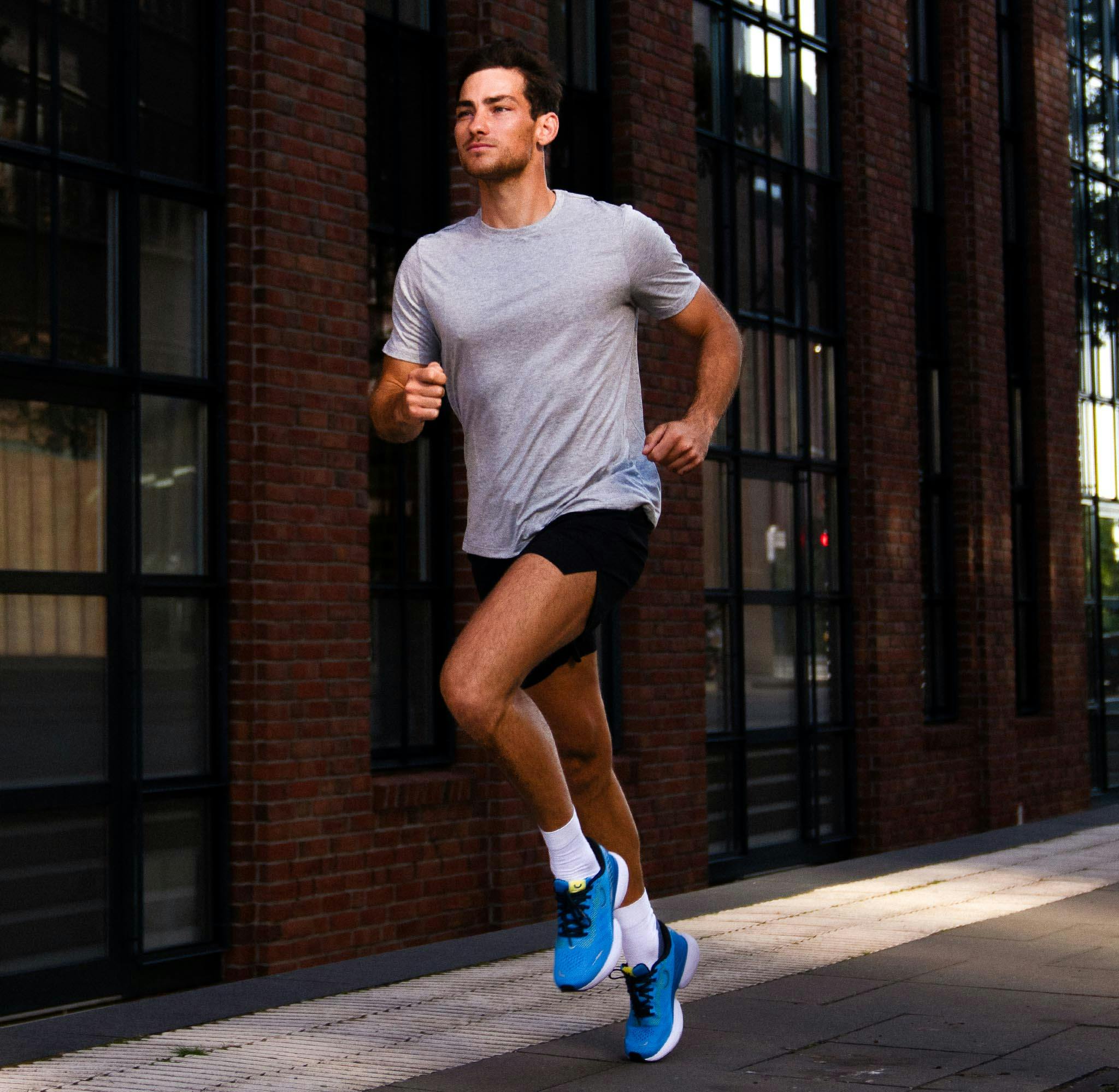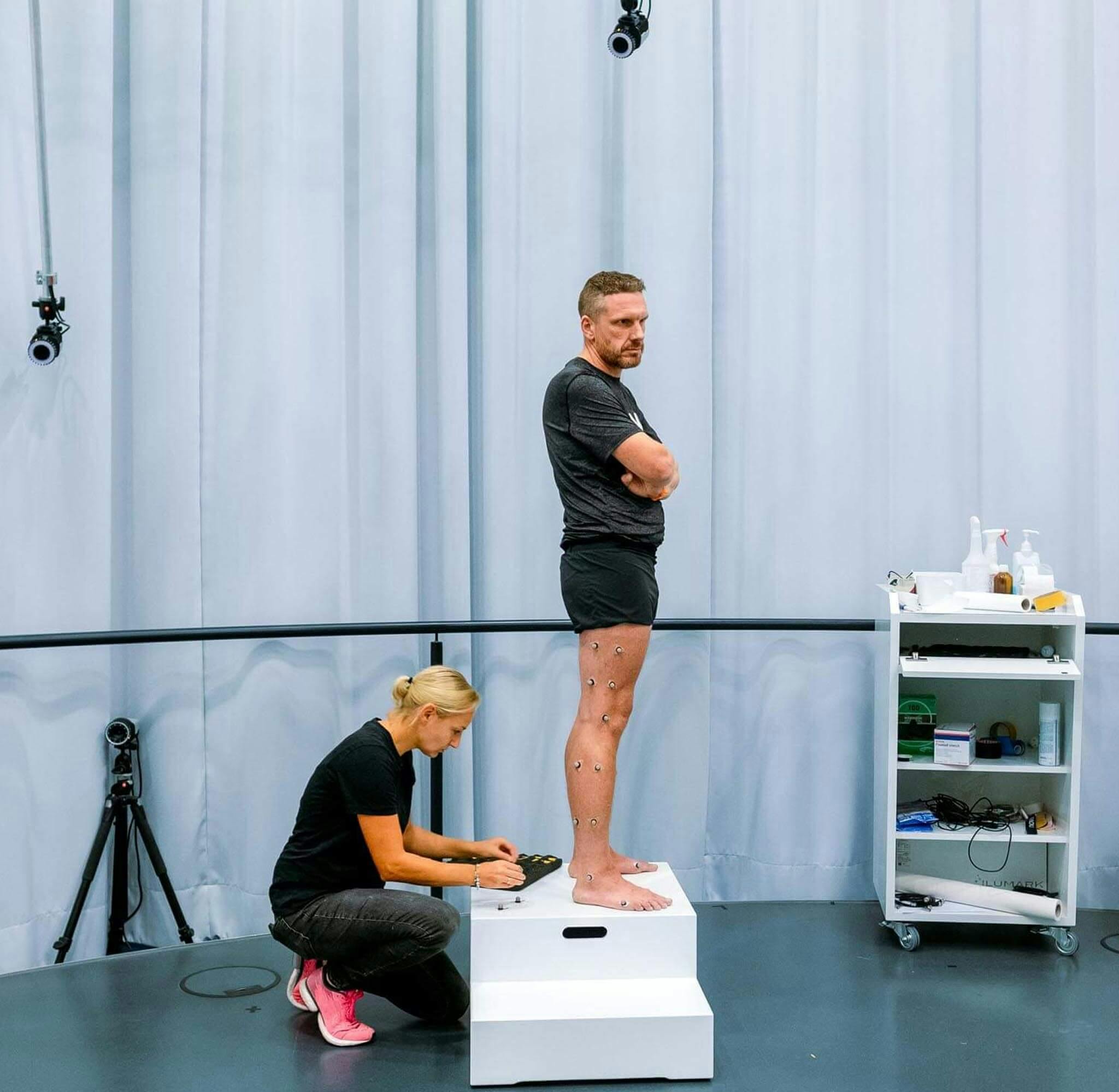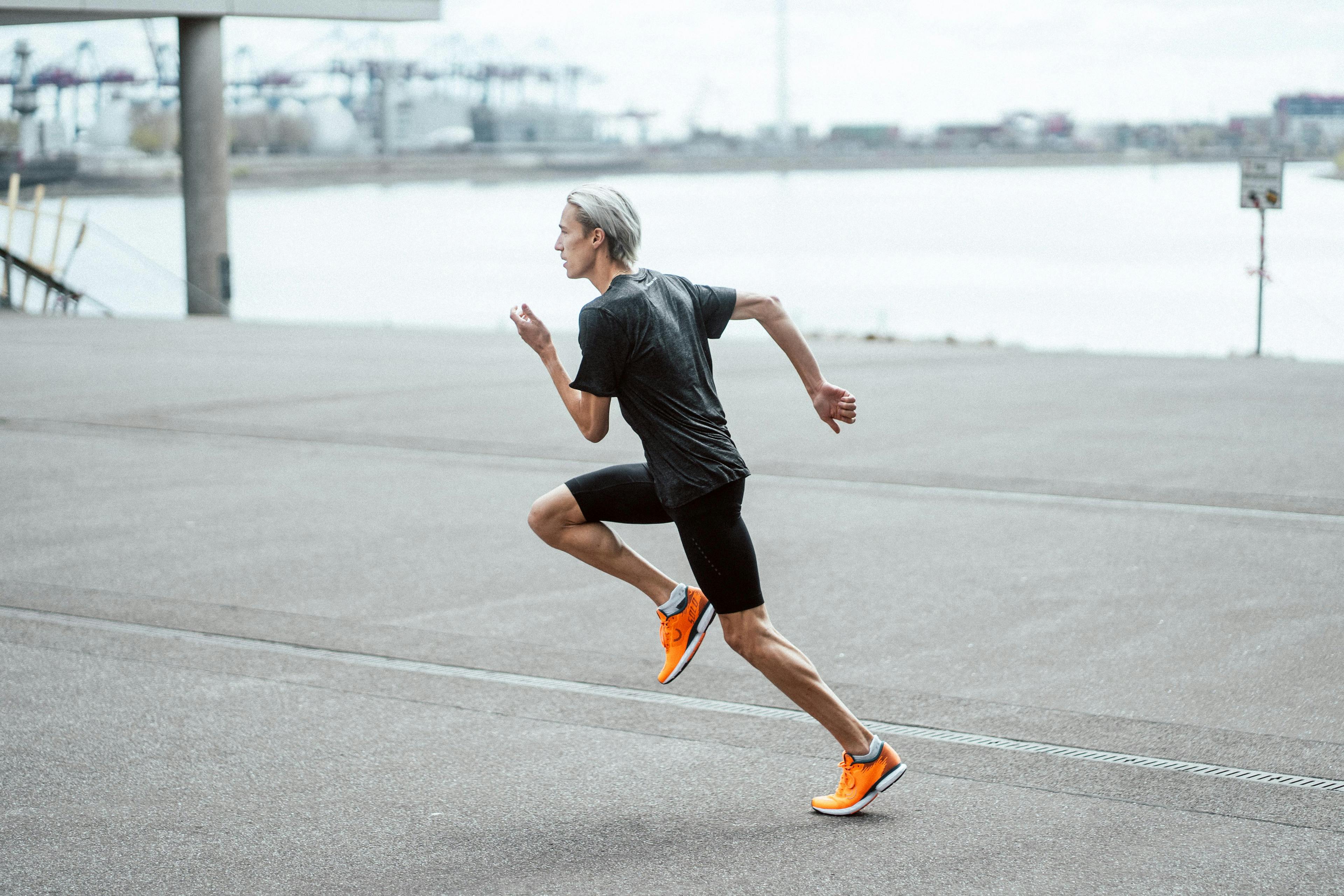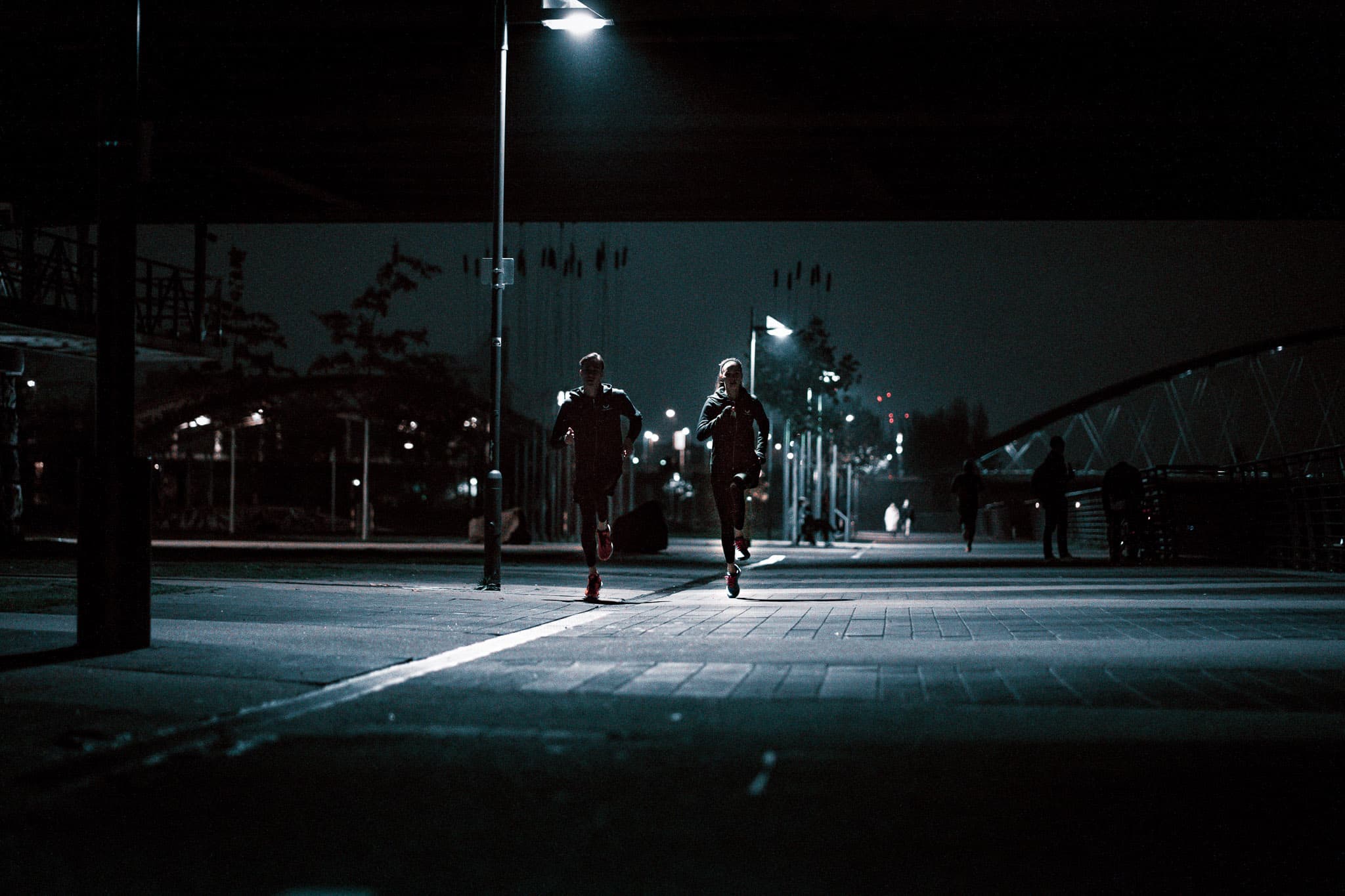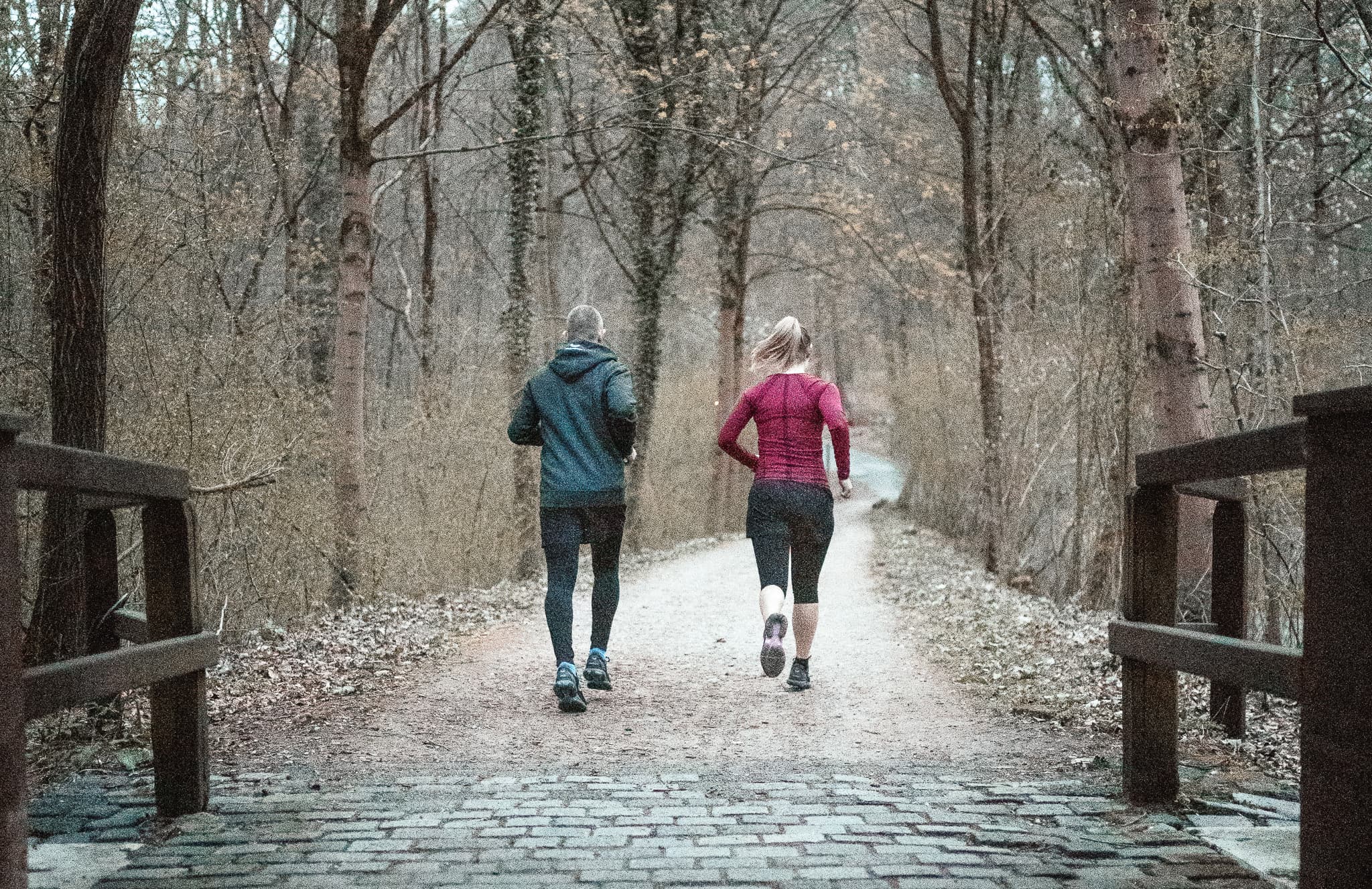
Running in the Rain – It All Depends on the Equipment
04th November 2021
When it rains outside, we want to curl up, drink a cup of tea, and watch a movie. Only very few people think about running. But there are good reasons to go for a run even in the rain. We stick to our training plan, stay fit – and strengthen our immune system. Some runners yearn for a little rain shower. After all, that’s when they have the running routes mostly to themselves. But to make running in the rain really fun, you need the right equipment. These tips will help you find the right running shoes and clothing.
Content:
Running shoes must provide good grip in the rain
The right clothes: special running jacket for rain instead of cotton
Five tips for running in the rain
Actually, the weather doesn’t matter. With the right clothes, running is always fun – even in the rain. Some runners, however, are turned off by bad weather, especially in the cold, wet fall. When we go out in thin sports clothes, we feel cold at first. But once we start moving, we quickly warm up from the inside. This works well at least as long as our clothes are not completely soaked. If we want to run in the rain, proper running gear is crucial.
Running shoes must provide good grip in the rain
When it rains, running tracks become slippery and muddy. Cobblestones and downhill stretches in particular quickly become a hazard while running – similar to aquaplaning for a car. When it rains, we therefore not only have to run more vigilantly, but we also need particularly good grip. Here, the outsoles of our running shoes are the decisive factor.
In principle, running shoes with more lugs also offer more grip, i.e., better footing. The differences in the outsoles of various running shoe models are sometimes immediately visible to the naked eye. If we let our hands glide over the outsoles in the store, we can feel the different lugs in any case. How slip-resistant the outsoles are in the end, however, is determined not only by the lugs – but also by the material.
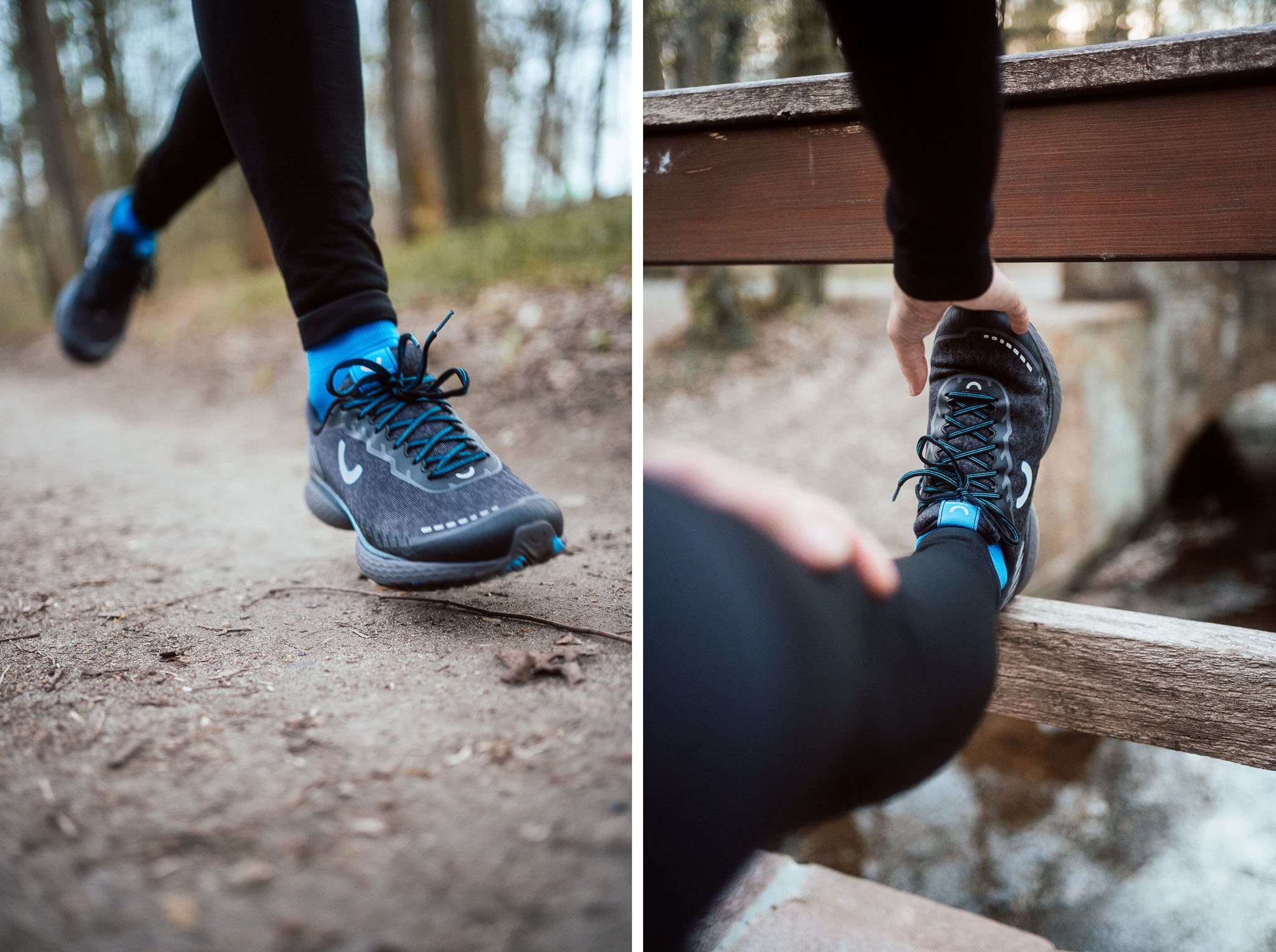
In the U-TECH Nevos Elements, for example, an outsole with rubber-like trimmings provides more grip and increased traction in wet conditions. These can be scientifically measured with the so-called coefficient of friction. “A higher coefficient of friction allows for better traction, which in turn leads to greater safety when running,” explains Gert-Peter Brüggemann, professor of biomechanics and co-founder of True Motion. Scientific studies have shown that with the U-TECH Nevos Elements, this coefficient is on average 30% higher than with comparable running shoes.
DON´T GIVE RAIN A CHANCE:
DISCOVER THE U-TECH NEVOS ELEMENTS
NATIVE TO ALL ELEMENTS
The U-TECH Nevos Elements: the variant of your favorite model defies all weather conditions and the elements. As upgrades, we installed a mud- and water-repellent, warmer upper and designed an entirely new outsole that provides firm footing on any surface – especially in wet conditions.
The upper – breathable or waterproof shoes
For many runners, however, the running shoe should not only be slip-resistant in the rain, but also stay dry for as long as possible. Often, however, this is not so easy: most amateur runners wear their running shoes year-round. While breathable running shoes are perfect for warm summer days, they quickly get wet when it rains – even from the inside. But if we wear waterproof running shoes in hot temperatures, our feet sweat heavily. A conflict.
Runners should therefore weigh up what is important to them personally. To go running in the rain, running shoes with a densely knitted upper that is water-repellent and not completely waterproof are usually sufficient. In heavy rain, our feet will eventually get wet, even in waterproof running shoes – namely whenever the rainwater runs down the leg into the shoes.
The right clothes: special running jacket for rain instead of cotton
In addition to the right running shoes, runners should also make sure they have the right clothing when it rains. Cotton in particular is a problem. It soaks up so much water that a cotton sweater quickly becomes a lead vest. This is not only uncomfortable – it also takes an extreme amount of energy to carry it.
"When running in the rain, runners should especially avoid cotton – because it soaks up water"
One thing is certain, if you go running in the rain, you’ll always get at least a little wet. Putting on too many clothes doesn’t help. Instead of protecting us from getting wet, we start sweating faster. And since wet clothes stick to our body, it can’t dissipate the heat properly. Therefore, even when running in the rain, sometimes less is more.
For example, if we run through a summer rain shower, it is warm despite being wet – and we can usually make do without a long top. In the fall and winter, on the other hand, it is often too cold in just a T-shirt. In these cases, special rain jackets for runners can help. They are water-repellent on the outside and breathable on the inside. This allows our bodies to wick away the water vapor produced by sweat – without getting soaked by the rain.
But it’s also clear that a running jacket is usually a compromise. If we sweat a lot and it rains a lot, even running jackets reach their limits. In many situations, it helps to wear a functional shirt under the rain jacket.
Put on a pair of shorts, a cap, and running socks
If temperatures permit, we should definitely avoid wearing long pants when running in the rain. Because even with pants, the more fabric we wear, the more weight we have to carry when it gets wet. This is not a tragedy for the time being. Because up to about 10 degrees Celsius we can go running in shorts without any problems.
In addition, the right choice of socks also influences our running experience in the rain. What sounds trivial is twice as important in wet conditions. Even in dry weather, running socks can prevent blisters on our feet. Socks that get wet quickly increase this risk. That’s because wetness creates friction – which increases the likelihood of blisters. Tight-fitting running socks do not slip and absorb less water than conventional cotton or tennis socks.
Another tip: many runners swear by a cap when running in the rain. To a certain extent, it not only keeps our head and face dry, but also protects us from getting water in our eyes while running.
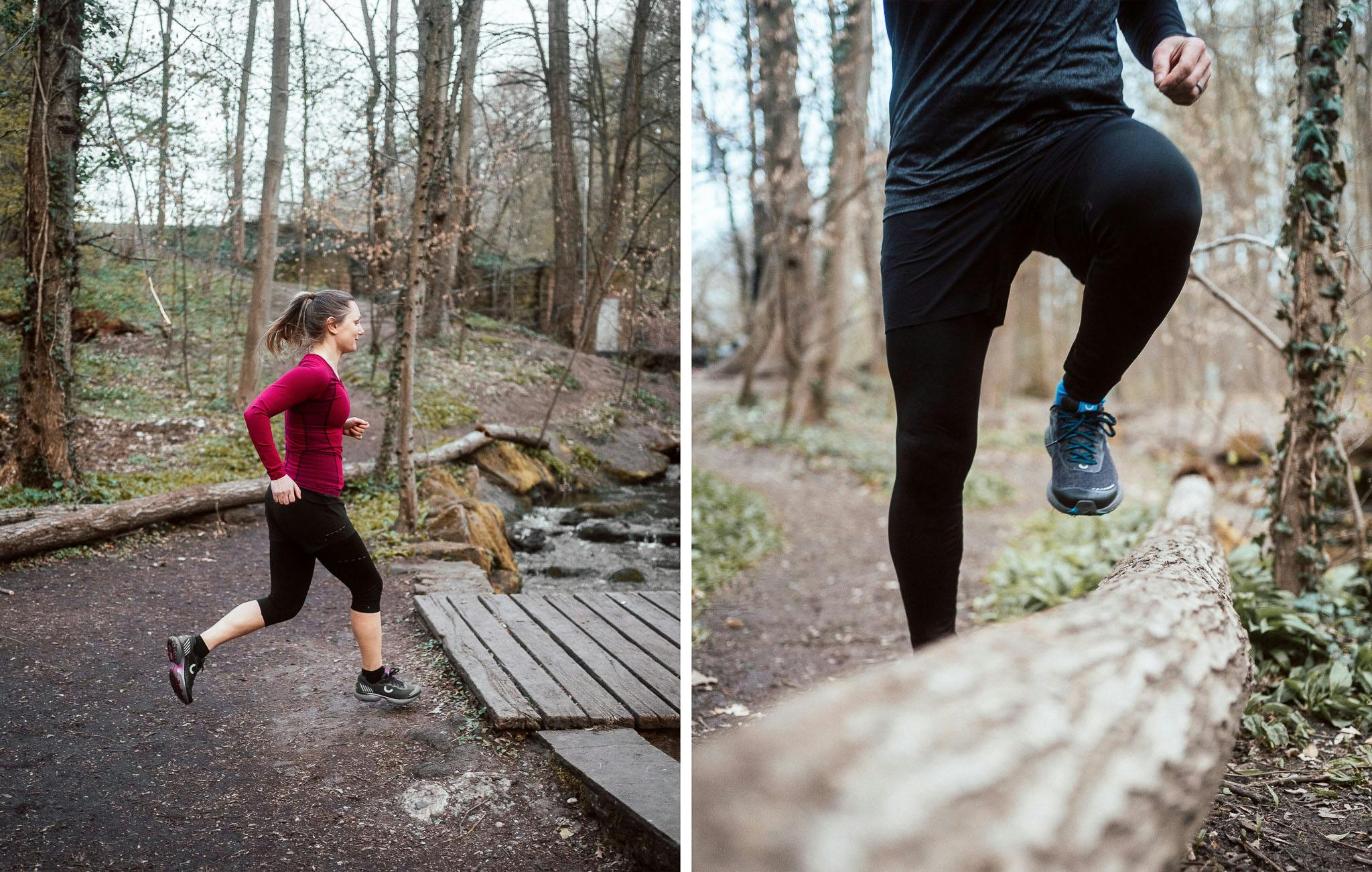
Five tips for running in the rain
Now that we’ve found the right running shoes and clothing, here are five tips to help us run safely in bad weather:
Avoid slip traps: When it rains outside, wet tree roots, cobblestones, and sloping routes in particular become real slip traps. Therefore, we should run on well-known routes in the rain or plan our routes well in advance.
Run with foresight: Sometimes it rains unexpectedly. If we are not familiar with our running route, we should be especially careful. It makes sense to keep an eye out for tripping hazards and puddles – and then steer clear.
Pay attention to your body’s center of gravity: To help us maintain our balance, we should generally place our feet under the center of our bodies when running. This is even more important on wet, slippery surfaces.
Avoid tempo units: If we increase our running pace, we also increase the pressure on our forefoot. However, we lose stability when forefoot running – and the risk of slipping increases. We should therefore adapt our training to the weather.
Take a shower: When we return from our run in bad weather, the first thing we should do is take a shower. This prevents our body from cooling down too much.
Three good reasons why we should run even in the rain
With the right running gear and knowledge, running in the rain is not dangerous. In fact, there are several good reasons why we should run even in bad weather.
We strengthen our immune system: If we run in the rain in the right clothes, we can strengthen our immune system. Because if you continue your training even in wet and cold temperatures, you improve your body’s thermoregulation – and thus your immune system in the long term.
Nothing can surprise us: Those who run competitions cannot influence the weather. Rain is not uncommon during a marathon. If you’ve never really run in the rain, you’ll struggle not only with yourself during the race – but also with the conditions.
Empty streets: If the weather is good, the most popular running routes will usually be crowded. Other runners and walkers quickly become our personal slalom poles. Rain makes for empty roads and thus for extraordinary running moments.

NEVER RUN OUT OF
NEWS
Discover all True Motion stories – and be the first to hear about new products, promotions and events. Simply, center your run!
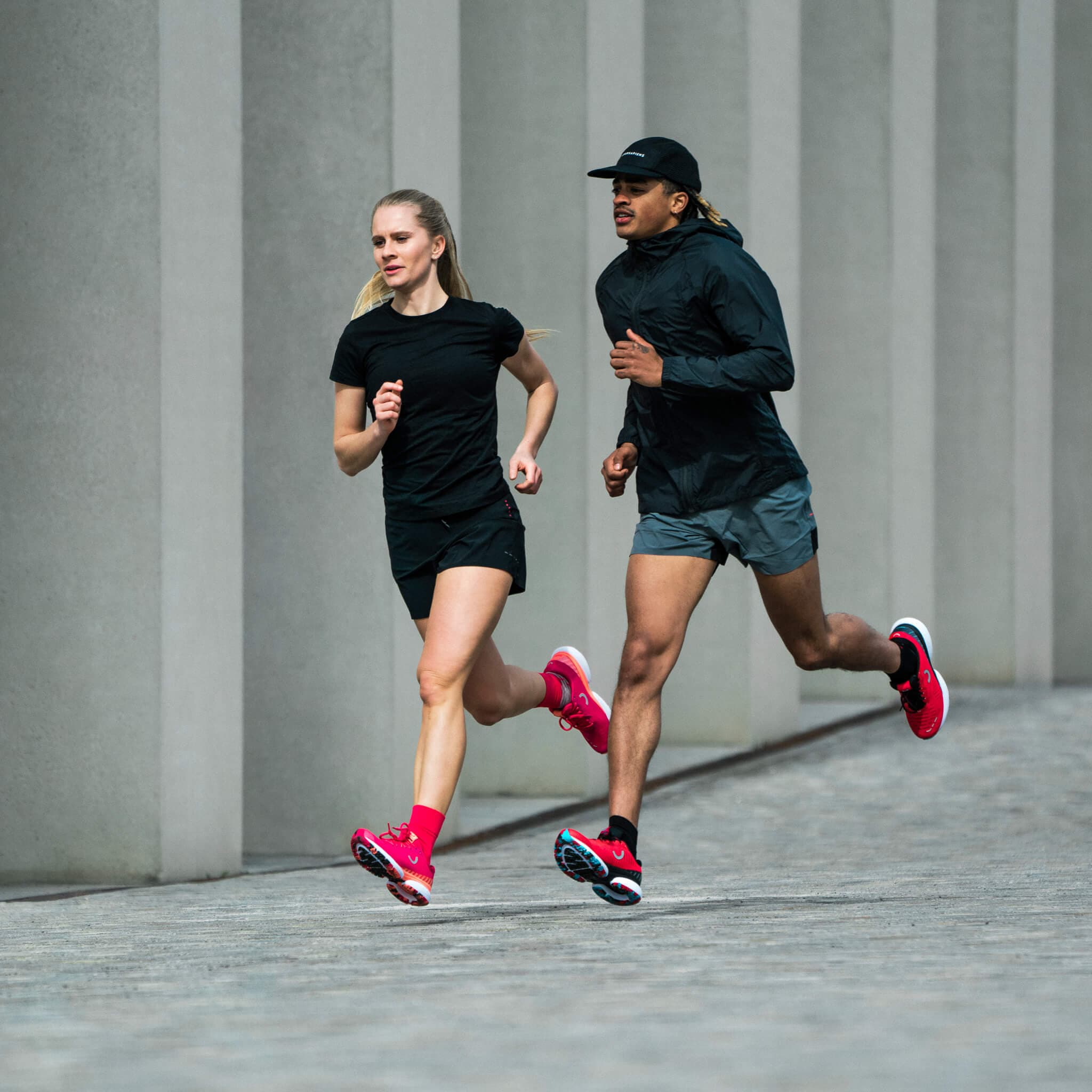
NEVER RUN OUT OF
NEWS
Discover all True Motion stories – and be the first to hear about new products, promotions and events. Simply, center your run!
READ THE NEWEST
U-RUN STORIES
Sabrina Mockenhaupt: This shoe got me running again
2025-10-31

Sabrina Mockenhaupt has achieved everything that many runners dream of. Running was and is her life, until the pain eventually became too much. Today, she is running pain-free again – this is her story.
Laura Schmidt: I have rediscovered running for myself
2025-03-07
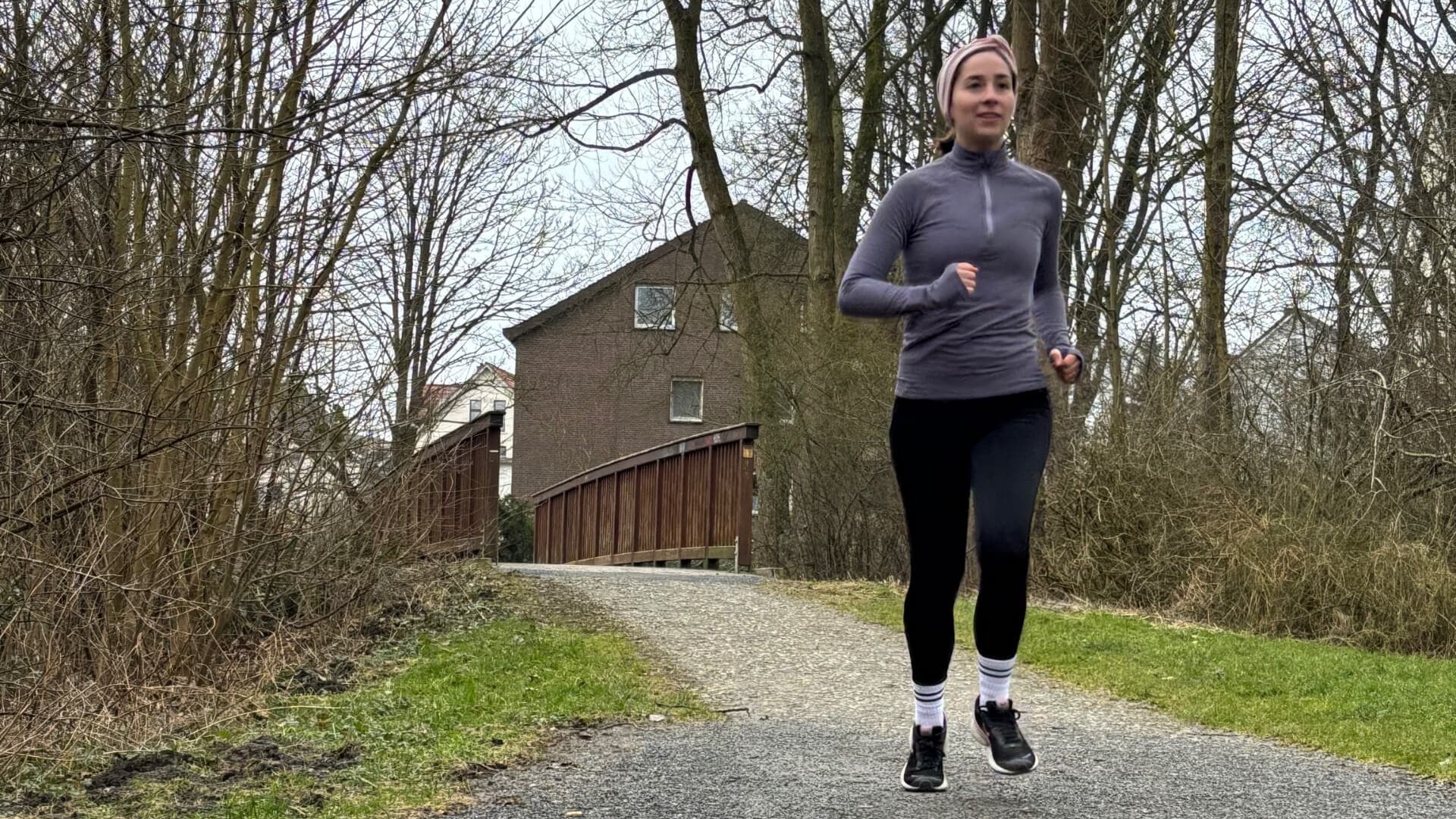
My name is Laura. I started running eight years ago – to clear my head after work. But knee pain kept me from being able to run regularly. A new pair of running shoes was finally the solution. Today I run pain-free. This is my true runner story.
READ THE NEWEST
U-RUN STORIES
Sabrina Mockenhaupt: This shoe got me running again
2025-10-31

Sabrina Mockenhaupt has achieved everything that many runners dream of. Running was and is her life, until the pain eventually became too much. Today, she is running pain-free again – this is her story.
Laura Schmidt: I have rediscovered running for myself
2025-03-07

My name is Laura. I started running eight years ago – to clear my head after work. But knee pain kept me from being able to run regularly. A new pair of running shoes was finally the solution. Today I run pain-free. This is my true runner story.
RECOMMENDED BY








RECOMMENDED BY








GET 10 % OFF YOUR FIRST ORDER!
Get your personal running updates with exclusive discounts, product news, training plans and tips for healthy running - straight to your inbox. 10% discount on your next order.
SERVICE
ABOUT US
© 2025 True Motion Running GmbH

